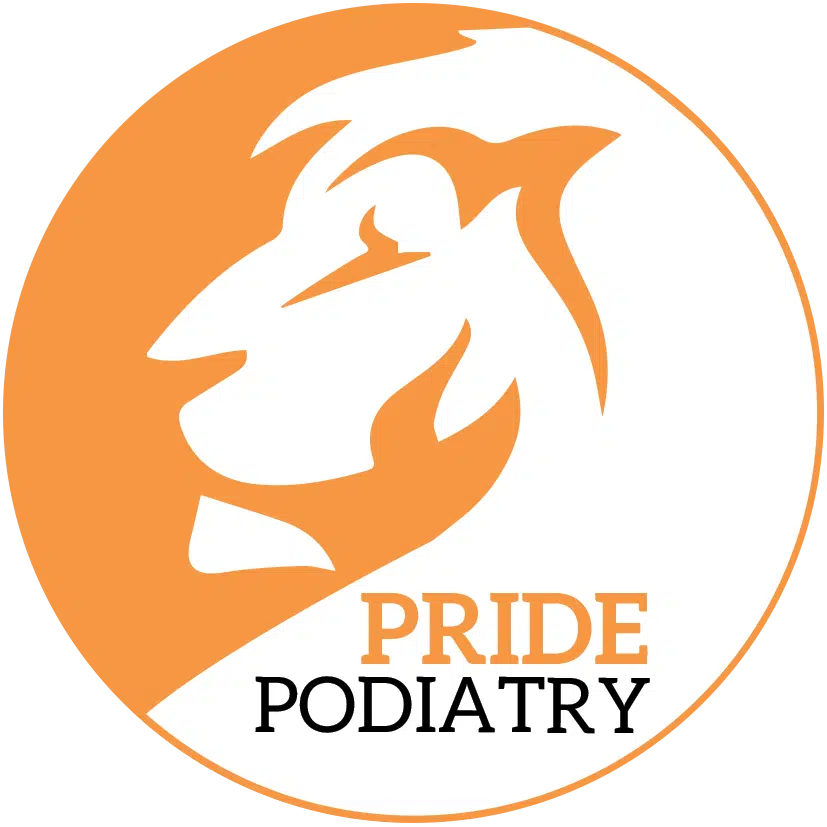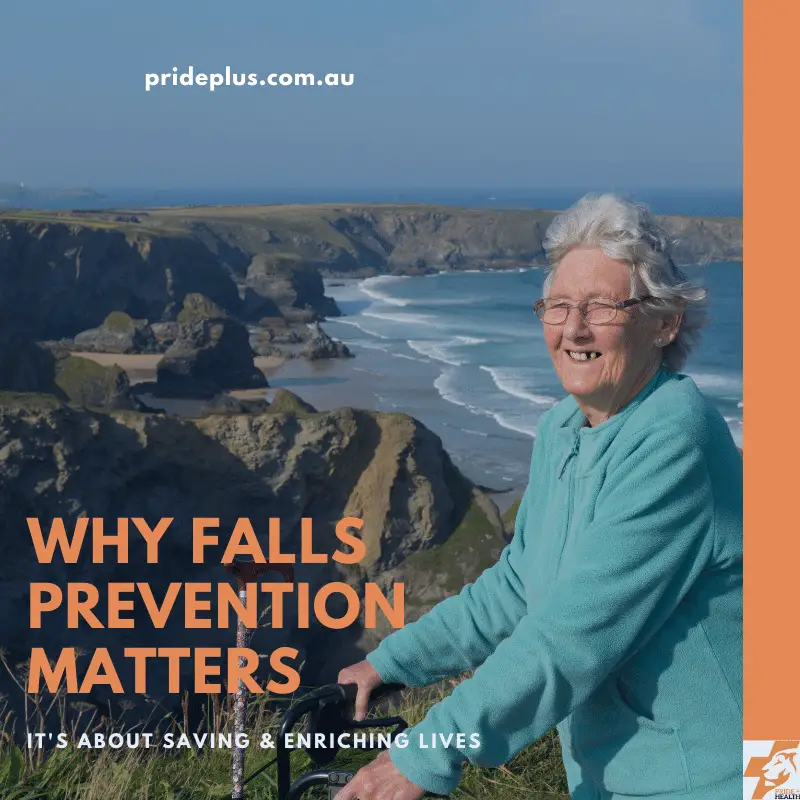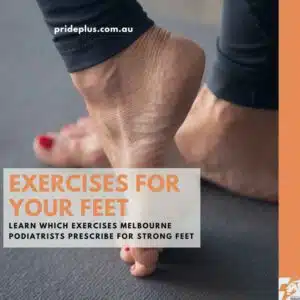Falls Prevention Is Important To Us All
Falling or even the fear of falling can be scary.
Confidence can begin to decrease and slowly activities like cooking, cleaning, moving about the house and walking outside can be daunting tasks.
One common misconception is that ‘it is just a part of ageing’.
Let me contest that claim. Age does not mean a loss of independence.
You can be old and strong!
Are all 65+ year olds at equal risk of falling and fracturing their bones? No.
Your risk of falls is determined by a number of factors.
Get started on your Strong & Steady falls prevention program and book your one-one-one EP Session here .
Falls Risk Factors
Some of us are stronger, some more mobile and others might be more confident having not suffered a falls-scare before.
The one thing we’re not, is all the same. We all have room for improvement, particularly in the falls and balance space.
Even though we’re seeing more people in-clinic in Pascoe Vale for falls prevention, I still believe that, with our ageing population, there are many more out there who could use exercise to make themselves stronger, more mobile and more confident on their feet.
Risk factors that contribute to falls are age, gender, strength, balance, mobility, footwear, eyesight, medications and more.
I’m passionate about this topic, let me share a personal story with you.
Falls Prevention Matters To Me
Growing up, Saturdays were for football and netball and it was a whole family affair. I played football, my sister played netball, Mum, Dad and my grandparents supported us both.
The football oval and netball court were separated by a steep hill.
Perfect for spectators going between the two, tricky for the oldies particularly on a wet day.
My grandparents would always come and support us without fail – so proud of us both and it provided a nice outing on a Saturday morning.
One day while navigating the hill, my grandma lost her balance, had a fall and injured her hip.
This ended with my grandma having a hip replacement, rehab for that replacement and now is not nearly as active, mobile and confident as she was.
The point of this story isn’t to scare you but it is to highlight the result of a lot of falls in our community that end in a significant decline in activity and capacity.
Falls are definitely something worth talking about!
Falls Prevention in Elderly Australians
Here are some bananas stats on falling:
- In 2018, Falls were the second highest leading cause of accidental and unintentional injury deaths worldwide (World Health Organisation).
- Approximately one third of people over 65 fall once or more per year in Australia.
- Burden on healthcare (basically how much does a fall cost Aussie taxpayers) in Australia ~$6500 per fall including rehabilitation.
Who Is At Risk Of Having A Fall?
Those most at risk of having a fall are people over 65 years old.
My grandma and grandpa, or it could be your mum or dad, or you!
The more risk factors you have makes you more susceptible to having a fall.
Risk factors include age, gender, poor lower-limb strength, poor mobility scores, footwear and eyesight.
The biggest risk factor for a fall is if you have already had one!
A population group this topic is very important for is for people living with osteoporosis.
Osteoporosis is characterised by low bone mineral density, making bones brittle and susceptible to fracture.
If you have osteoporosis and have a fall it can be very serious.
Osteoporosis is an under-diagnosed condition and is commonly referred to as the ‘silent’ disease with no overt signs and symptoms.
Unfortunately, osteoporosis may not get diagnosed until a fracture has already occurred.
Around 1 in 4 women over 75 are living with osteoporosis. There are currently 924,000 people estimated to be living in Australia with osteoporosis.
Whenever I see a big number like that I always run it by the MCG test.
That is 9 MCG’s worth of people with an under-diagnosed condition!
This is something we have to look out for in our elderly population and if I would guess, osteoporosis and incidence of falls may become more prevalent as our population ages and is generally less active than ever before.
In Pascoe Vale we have our Strong To The Bone Program to provide treatment for osteoporosis.
So what can we do?
And the burning question…
Can Falls Be Prevented?
YES!
The majority of falls are preventable.
The answer lies in falls and balance programs.
Falls Prevention Programs
Research shows that with a structured falls and balance program – falls risk can be reduced by improving lower-limb strength, mobility and balance.
For us exercise professionals, an important question to consider is what was the mechanism of the fall?
There’s a difference between tripping, feeling dizzy, feeling like your legs are giving way and ‘blacking out’.
This information can shed light on what exactly is causing you to fall, get you the help you need and help your exercise physiologist determine what exercises might be most appropriate for you.
Generally, the longer and more consistent a falls prevention program, the more lasting an improvement can be achieved.
Research suggests that completing a falls and balance program twice a week for 6 months gives the best outcomes by the end of the year.
Exercises For Falls Prevention
There are a few non-negotiables when it comes to falls and balance
- The exercises prescribed to you must be safe
- The exercises must challenge your balance
An effective falls and balance program is one that challenges you!
Falls and balance programs have a mix of strength based and balance based activity.
Example Exercises in Falls Prevention Program
Exercises such as these improve strength if completed to the right dosage for your abilities.
In the following videos I’ll put one of our Pascoe Vale podiatrists through his program.
Challenging your balance in a safe structured way with exercises and movements like these are also vital to reduce your risk of falls.
My Final Falls Prevention Reccomendation
Get in and start with now.
Your exercise physiologist will get you or your loved ones involved in a falls and balance program.
It’s important to move and prioritise exercise in your weekly routine.
Get help from your exercise physiologist to assist with progressing the program, add variety and provide support on your journey.
Remember we need to challenge you!
Book your one-one-one EP Session here to get started on your Strong & Steady falls prevention program.
If you or a family member are ready to start your falls and balance program you can book in online with us now.
A one-on-one session with us EPs (Exercise Physiologists) will be the perfect way to work out what risk factors and exercises we need to do together to reduce your risk of falls.
After our first one-on-one session you can decide whether exercises are done at home, in our group exercises classes or stick with further one-one-one sessions to have your very own EP motivate you along.
See you in The Strong Room in our clinic soon!
Physio or Exercise Physiologist?
There can be some confusion about us exercise physiologists and how we are similar and different to our friends the physios. We created an interactive quiz to help you find out just who will be the best person to help you. Take the quiz about the difference between physios and EPs here.




